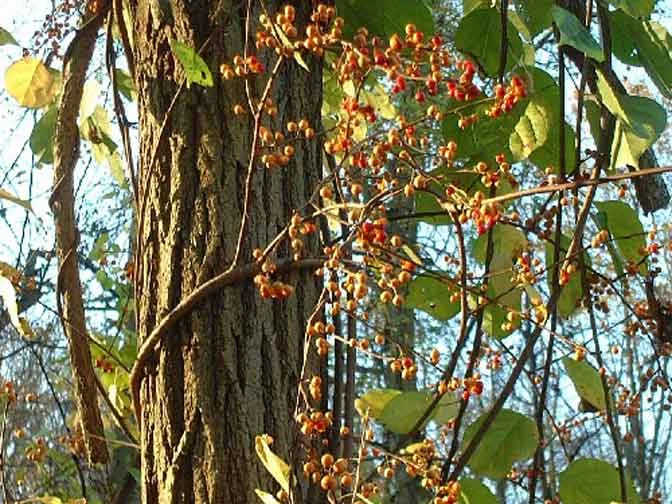Peter Del Tredici of the Arnold Arboretum in Massachusetts and the Harvard Graduate School of Design has an altogether different outlook. He praises many exotics that were brought to this country as specimens but through overplanting have escaped cultivation and now dominate the landscape. A prime example would be Ailanthus altissima (the “Weed Tree”, the “Tree that Grows in Brooklyn”, “Ghetto Palm”, “Stink Tree” or properly thought of as the “Tree of Heaven”) which was brought to the United States in the late 1700’s and planted as a street tree (along with the equally regrettable Acer platanoides/Norway Maple) after Dutch Elm disease annihilated the vast majority of American Elms. It has since escaped cultivation and become invasive due to it’s prolific nature producing seeds, quickly colonize areas, suppress competition via it’s allelopathic chemicals, suckering habit and vigorous response to pruning and lack of a predator/parasite to keep it’s population intact. The author, who has spent six years writing a field guide he calls "Wild Urban Plants of the Northeast," finds himself squarely at odds with native-plant fans that see Ailanthus, Bittersweet and other expansive plants as alien species that have invaded, choked and degraded natural areas.
Dozens of outcast species grow where no others will in the vegetatively hostile areas of urban America. They are not, in Del Tredici's mind, weeds; they are wild, not invasive but "spontaneous." “These are the plants that grow in sidewalk cracks, against chain-link fences, in spaces that no one takes care of,” Del Tredici said. “ You say it’s ugly, you say it’s invasive, but in the absence of maintenance, this is the default vegetation.” Essentially these are plants that have adapted to our present environmental state of urbanization.
Significant in his thinking process is the idea that urban ecology is the future of our civilization, as we become a more city-oriented, urban population. Urban areas are defined by the amount and existence of paving, the absence of vegetation. Del Tredici speaks practical and compassionately…. these plants “are the symptoms of urban degradation, not the cause of it. Biological systems are constantly changing, they are not fixed and thus we should accept and praise the benefit of these exotics.
The issue of where a given plant comes from must be secondary to the issue of its future survival. Again, the sad thing about the debate over native versus exotic species is that it has become so polarized. At its most simplistic level, native is equated with good, exotic with bad. What I find particularly depressing about the 'native species only' argument is that it ends up denying the inevitability of ecological change. Its underlying assumption is that the plant and animal communities that existed in North America before the Europeans arrived can and should be preserved. From the functional perspective, the presence of invasive species in the landscape can be interpreted as symptoms rather than causesof environmental degradation.”1
1. Neocreationism and the Illusion of Ecological Restoration by Peter Del Tredici


